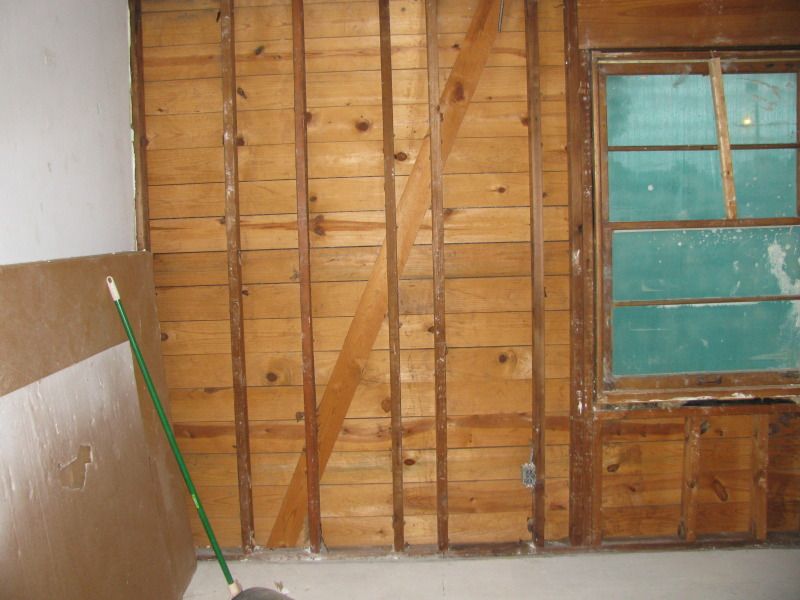Amish Electrici
Bronze Member
- Joined
- Apr 24, 2012
- Messages
- 39
As I get into the remodel of my well-worn home, I find a board in an inconvenient place. Let me explain....
1957 single-floor ranch, with 2x4 studs and 5/4x8 plank sheathing. At the corners of the house, set into notches in the framing, are 5/4x8 boards set at perhaps a 45 degree angle.
I can see how these braces would 'square' the wall during assembly, but I am not sure whether they add anything once the sheathing boards were added; I would think the sheathing can't help but add a lot of shear strength to the wall.
So, here's the question: Is one allowed to simply cut away any offending parts of this diagonal brace... or should other bracing be provided?
[it is my intent to instal an air conditioner in that location. I am also looking into alternate locations for the A/C]
1957 single-floor ranch, with 2x4 studs and 5/4x8 plank sheathing. At the corners of the house, set into notches in the framing, are 5/4x8 boards set at perhaps a 45 degree angle.
I can see how these braces would 'square' the wall during assembly, but I am not sure whether they add anything once the sheathing boards were added; I would think the sheathing can't help but add a lot of shear strength to the wall.
So, here's the question: Is one allowed to simply cut away any offending parts of this diagonal brace... or should other bracing be provided?
[it is my intent to instal an air conditioner in that location. I am also looking into alternate locations for the A/C]

